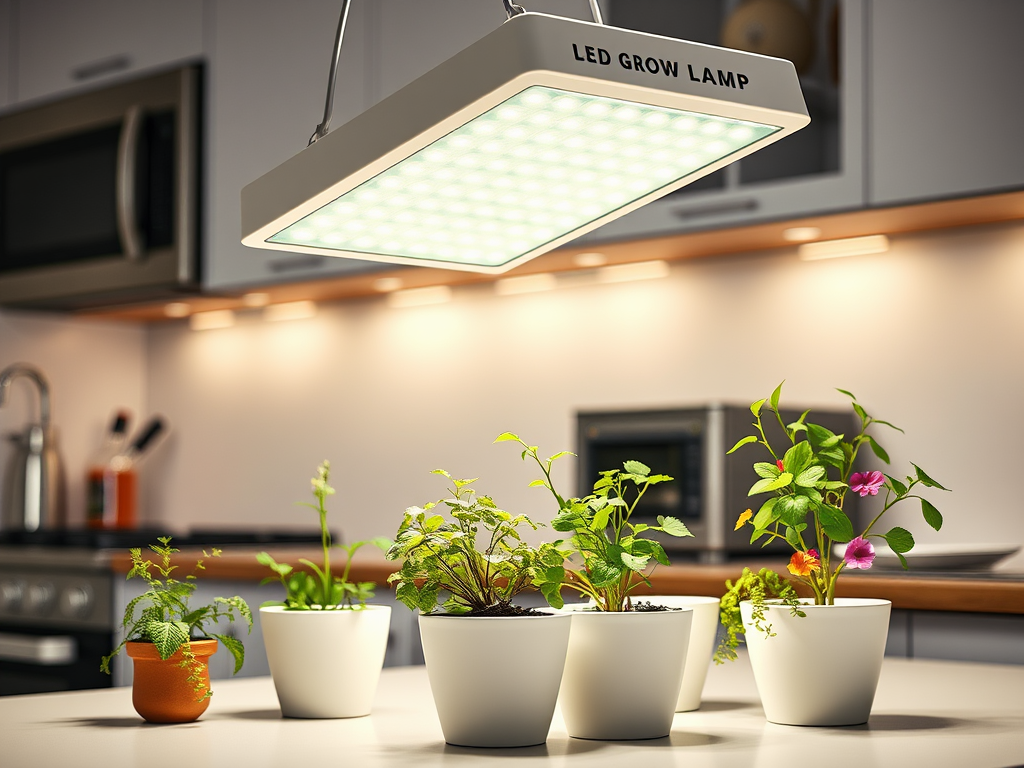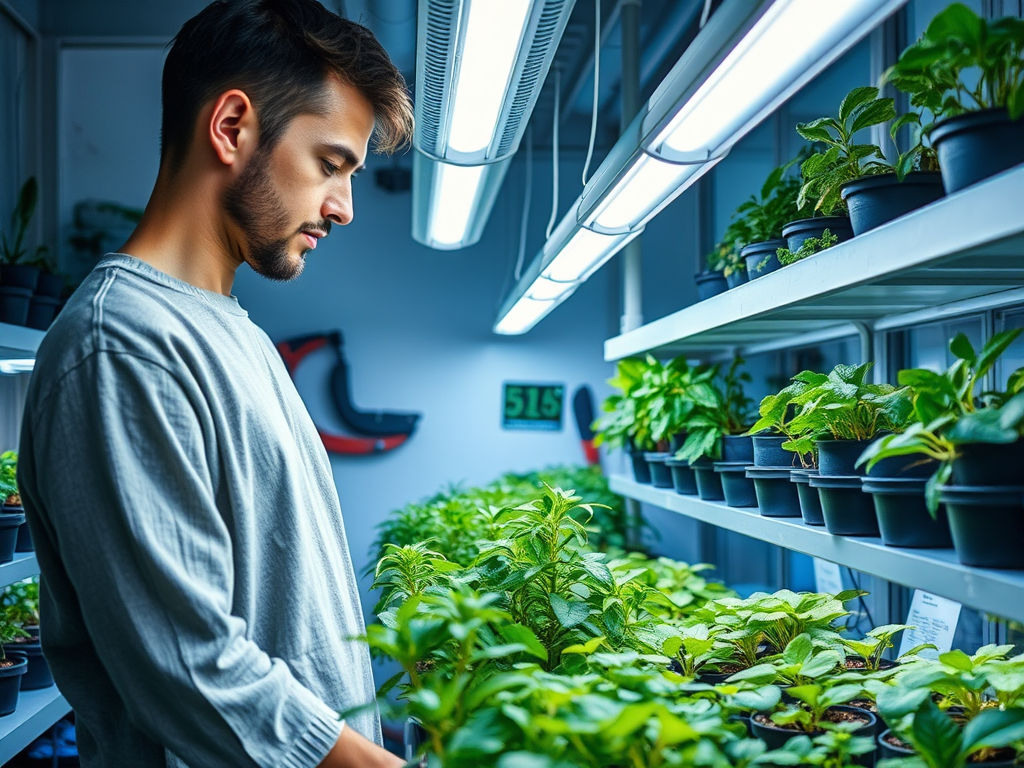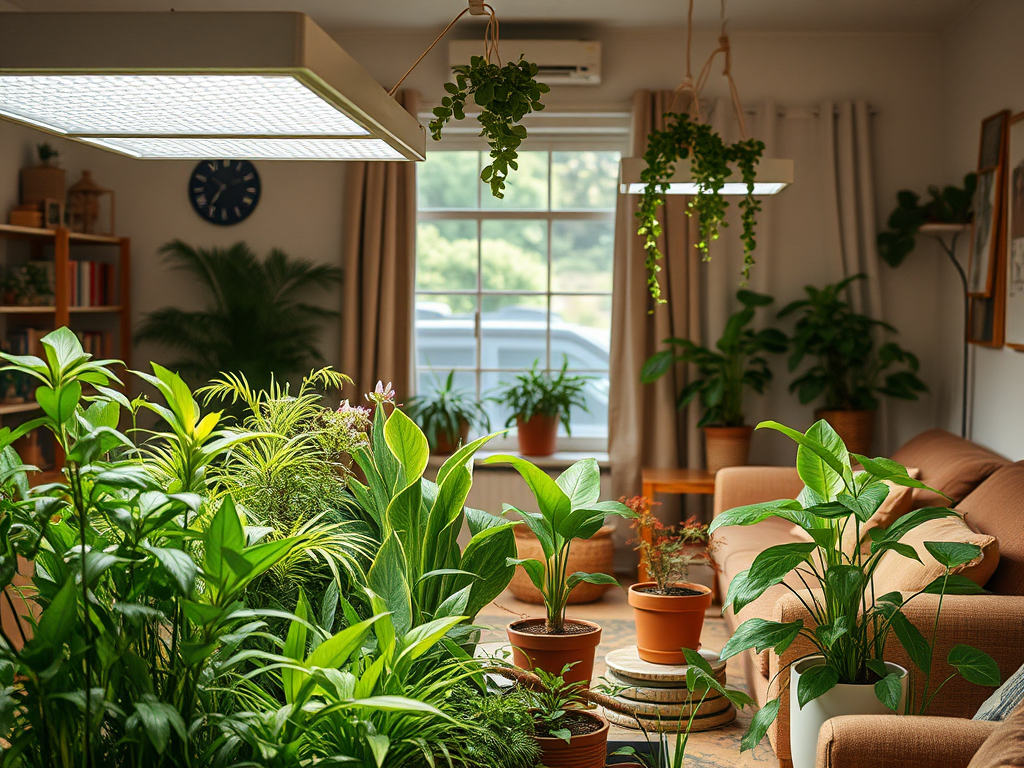Indoor gardening has become a refuge for many city dwellers sheltering amidst concrete jungles, where the sun’s rays might not always reach. A multitude of individuals have found immense joy in nurturing indoor plants, which not only beautify their spaces but significantly improve indoor air quality. However, as any seasoned gardener knows, successful indoor plant care requires more than merely displaying greenery on a windowsill; it necessitates meticulous attention to light sources. For beginners, grasping the crucial role of grow lamps can transform their plant care journey and lead to flourishing foliage. This article delves into the indispensable function of grow lamps, breaking down their types, benefits, and effective usage strategies that will empower new gardeners to unlock the full potential of their indoor plants.
Grow lamps are artificial lighting solutions specifically crafted to replicate the sunlight that plants crave for photosynthesis. When the natural light is inadequate, particularly in winter months or in rooms with limited sunlight, these lamps step in as bright proxies for the sun. For beginners unfamiliar with the intricacies of indoor gardening, understanding grow lamps can seem daunting; however, once familiarized, they can serve as a bridge to creating conditions that promote robust plant growth. Not only do these lamps help plants thrive, but they also support diverse plant types, allowing newcomers to experiment with various species. By providing adequate illumination, grow lamps combat the issues of common indoor plant failures and empower new gardeners to embrace their green thumbs wholeheartedly.
Understanding Grow Lamps

At its core, a grow lamp’s primary function is to offer the right spectrum of light needed for plant growth inside your home. Grow lamps cater specifically to the unique light requirements of varying plant types, making them essential tools for anyone serious about indoor gardening. Implementing them effectively can address issues such as leggy growth and lack of flowering, which often plague plants kept in poor lighting conditions. It’s worth noting that different types of grow lamps are available, each with distinct features and advantages. Familiarizing yourself with these types will allow you to select the right one for your specific plants and growing conditions. Below, we will explore the various types of grow lamps available to help you make an informed decision.
Types of Grow Lamps

| Type of Grow Lamp | Advantages | Considerations |
|---|---|---|
| LED Grow Lamps | Energy-efficient, long-lasting, emits full spectrum light | Higher initial cost |
| Fluorescent Grow Lamps | Affordable, soft light, good for seedlings | May require more frequent replacement |
| High-Intensity Discharge (HID) Lamps | Powerful and effective for larger plants | Produces a lot of heat, requires proper ventilation |
When selecting a grow lamp, understanding the nuances of these options enables effective plant care. Here’s a breakdown of the principal types:
- LED Grow Lamps: Known for their energy efficiency and long lifespan, LED grow lamps emit a full spectrum of light, making them suitable for all growth stages.
- Fluorescent Grow Lamps: These lamps are budget-friendly, providing a soft light that works well for seedlings and shade-loving plants.
- High-Intensity Discharge (HID) Lamps: While powerful and favored for extensive setups, HID lamps produce substantial heat, making ventilation paramount for indoor use.
Benefits of Using Grow Lamps
The incorporation of grow lamps into your indoor gardening toolkit comes with a wealth of benefits that can radically enhance the health of your plants. The clearest advantage is the consistent availability of light that these lamps provide, allowing gardeners to regulate light exposure precisely. This regulation can be pivotal in preventing issues caused by insufficient light, such as slow growth or wilting leaves. Additionally, with the right grow lamp, you can create optimal growing conditions tailored to the needs of specific plants, encouraging rich colors and vibrant growth. Furthermore, grow lamps are particularly valuable during seasons when natural sunlight is scarce; they help maintain stable growth cycles irrespective of seasonal changes. Ultimately, these benefits combine to foster a thriving indoor garden that can bring joy and life into your home.
Choosing the Right Grow Lamp
Selecting the ideal grow lamp requires an understanding of both your plants’ needs and your personal growing conditions. This informed decision will steer you toward the lamp that suits your scenario best. Here are some key factors to consider while making your choice:
- Type of Plants: Assess the specific light requirements for your plants—succulents typically need a higher intensity compared to low-light plants like ferns.
- Space Assessment: Evaluate the dimensions of your growing area to ensure that the lamp not only fits but provides sufficient coverage.
- Budget Constraints: Weigh the upfront cost against the long-term savings on energy and replacements; often, a slightly higher investment in quality can save more down the line.
By keeping these tips in mind, beginners can navigate the myriad options available on the market and choose a grow lamp that meets their needs effectively.
Practical Tips for Using Grow Lamps
To maximize the impact of grow lamps, adherence to best practices is essential. Understanding how to position and use these lamps not only enhances plant health but also prolongs lamp life. Start by adjusting the height of the lamp as needed to ensure your plants receive the optimal amount of light without risking damage. Setting a consistent light schedule is equally crucial; most plants thrive best with around 12-16 hours of light daily, mimicking the natural light cycle. Moreover, continuously monitoring how your plants respond to the grow lamp will allow you to make necessary adjustments based on growth patterns. For beginners, these practices can significantly improve the likelihood of cultivating a verdant indoor space and will advance one’s skills in nurturing plants effectively.
Conclusion
In conclusion, grow lamps serve as indispensable allies in indoor plant care, particularly for those just starting their gardening journey. By grasping the types of grow lamps available and their specific benefits, beginners can make informed decisions that will bolster their indoor gardening endeavors. Furthermore, practical tips around lamp usage can ensure a flourishing indoor garden, regardless of the prevailing natural light conditions. As you embark on this rewarding and green journey, let grow lamps illuminate not just your plants but also your passion for nurturing life indoors.
Frequently Asked Questions
- What is the best type of grow lamp for beginners? LED grow lamps are ideal for beginners due to their efficiency and adaptability.
- How many hours should I keep my grow lamp on? Most plants benefit from 12-16 hours of light per day.
- Do I need a grow lamp for low-light plants? While low-light plants can survive in limited light, using a grow lamp can help promote more vigorous growth.
- Can I use regular light bulbs for plant growth? Regular light bulbs fall short in providing the necessary light spectrum, making grow lamps a more effective choice.
- How far should grow lamps be from plants? The distance varies by lamp type; generally, LEDs should be 12-24 inches above plants, while HID lamps should be placed further due to heat production.
